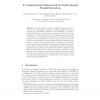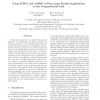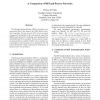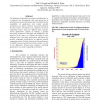IPPS
1999
IEEE
14 years 11 months ago
1999
IEEE
Abstract. Recent advances in software and hardware for clustered computing have allowed scientists and computing specialists to take advantage of commodity processors in solving ch...
SIGCSE
2000
ACM
14 years 11 months ago
2000
ACM
We describe the experience of three undergraduate computer science programs offering courses on parallel computing. In particular, we offer three different solutions to the proble...
LCPC
2009
Springer
14 years 11 months ago
2009
Springer
PC grids represent massive computation capacity at a low cost, but are challenging to employ for parallel computing because of variable and unpredictable performance and availabili...
DAC
2009
ACM
14 years 11 months ago
2009
ACM
The progress of GPU (Graphics Processing Unit) technology opens a new avenue for boosting computing power. This work is an attempt to exploit GPU for accelerating VLSI circuit opt...
ICPP
2002
IEEE
15 years 1 days ago
2002
IEEE
The advantages of pattern-based programming have been well-documented in the sequential literature. However patterns have yet to make their way into mainstream parallel computing,...
CCGRID
2002
IEEE
15 years 2 days ago
2002
IEEE
Porting large applications to distributed computing platforms is a challenging task from a software engineering perspective. The Computational Grid has gained tremendous popularit...
CLUSTER
2003
IEEE
15 years 12 days ago
2003
IEEE
At UCLA's Plasma Physics Group, to achieve accessible computational power for our research goals, we developed the tools to build numerically-intensive parallel computing clu...
0
posts
with
0
views
0
views
 Homepage
Homepage IPPS
2005
IEEE
15 years 21 days ago
2005
IEEE
The Message Passing Interface (MPI) is a popular communication library that supports the SIMD model of parallel computing. Process networks (PN), where processes communicate throu...
ITNG
2006
IEEE
15 years 1 months ago
2006
IEEE
The utilization of parallel processing in bioinformatics is a relatively new development, and wide spread use of parallel processing in this domain has been limited by the availab...






